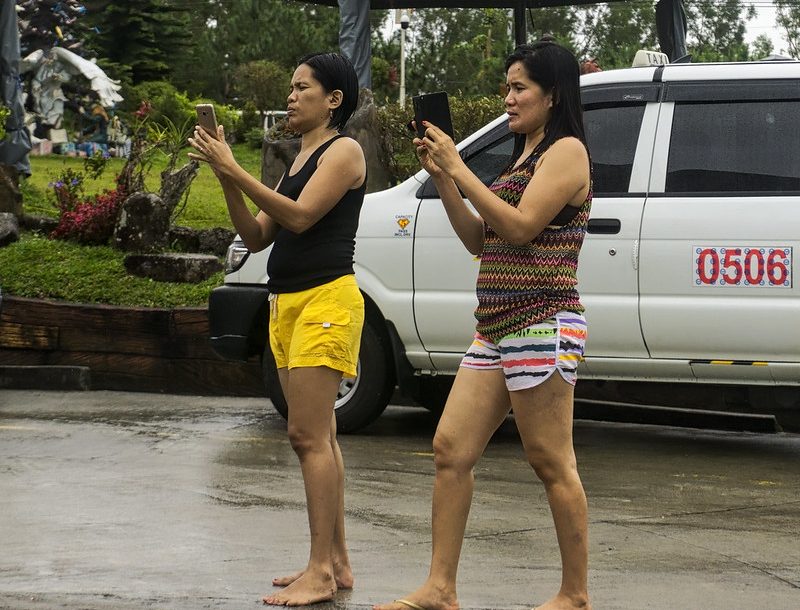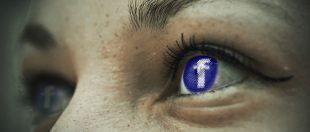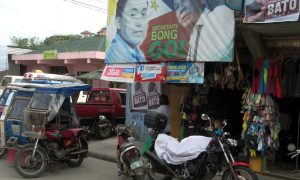This paper was published in Italian, as “La “prova digitale” nella protezione dei diritti umani nelle Filippine: una lezione dal “caso Nuezca” in RISE Relazioni internazionali e International political economy del Sud-Est asiatico, 20 April 2021, Vol. 5, No. 4, pp. 2-4. This English language version is published in partnership with the Torino World Affairs Institute.
In December 2020, a police officer surrendered himself to authorities to be charged with the murder of a mother and her son in Tarlac province, north of the Philippine capital Manila. Elsewhere in the world, such an occurrence would have been an ordinary non-event, showing the normal functioning of the criminal justice system. But in Duterte’s Philippines, an aggressive police-led War on Drugs envelops society. There is impunity for extrajudicial killings (EJKs) which is secured through explicit encouragement of such killings by the President himself who has furthermore vowed to protect his security forces. Human rights organisations point to tens of thousands of drug-related extrajudicial killings at the hands of police and vigilantes, and perpetrators of these killings are very rarely prosecuted, much less do they surrender and face up to the legal consequences of their acts. The administration is vociferous in its rhetoric against human rights for criminals, critics and unwanted others. Thus, Filipino civil society is hard-pressed to find effective ways to protect people from being extrajudicially killed, often relying on the lifeline provided by international supporters.
The incident in Tarlac holds valuable lessons about involving ordinary people and the use of commonplace digital technology in the work of exposing abuse—lessons which Filipino civil society can benefit from. Indubitably, what was different in the Tarlac incident was that the killings were recorded on video by a witness; most killings, in contrast, though sometimes reported in the media, are never recorded in this way. The graphic footage, taken by a relative of the victims who was in the vicinity of the incident using her cellphone camera, shows the off-duty policeman Jonel Nuezca and his young daughter arguing with the mother and son, Sonya and Frank Gregorio, within the Gregorios’ property. The daughter screamed at the Gregorios saying “My father is a policeman!” before Nuezca shot the Gregorios at close range, in the presence of his daughter and the Gregorios’ relatives and guests. The footage circulated in social media, provoking outrage among its viewers. Public criticism was widespread enough to reach the attention of government and prompt Duterte’s officials to acknowledge that the conduct of the off-duty policeman in this case was unacceptable. While claiming that this was an “isolated incident”, officials vowed to charge and punish the policeman.
Video evidence and documentation of police abuse
The Philippine’s War on Drugs is arguably among the most aggressive anti-drugs campaigns in the world today, targeting predominantly street-level peddlers and drug users among ordinary people, rather than big-time suppliers. The Philippine government admits that thousands have been killed, and scholars estimate that a more accurate number could be up to three times the official figures. Filipino and international organisations have documented EJKs in Duterte’s War on Drugs largely based on testimonies, official documents and media reports. (See, e.g., The Drug Archive) They have helpfully preserved evidence and provided information to Philippine courts as well as to the United Nations and the International Criminal Court to build a case for the investigation and prosecution of human rights violations and international crimes in the Philippines.
Duterte has so far met efforts at documenting EJKs with denial, disinformation and virulent attacks against human rights and their advocates, including human rights organisations, judges, the UN special rapporteur and the ICC prosecutor. The government’s messaging in general has been very aggressive and intolerant of dissenting views, and is known to be backed up by a sophisticated disinformation industry and trolling machinery that work to cow society into silence or acquiescence towards violence and embolden illiberal attitudes. (The consumption of fake news and the mass uptake of post-truth communicative strategies are particularly effective in the Philippines, given its decrepit information infrastructure and lack of regulations.) There is a widespread perception encouraged by surveys that Duterte enjoys the support, even admiration, of the Filipino public. This has heartened Duterte to adopt increasingly draconian measures to consolidate his rule, such as the amendment to the anti-terrorism law.
Given this context, it would seem that Filipinos are indifferent towards killings and abuse of power. This is, however, untrue. Police abuses have sometimes energised wide segments of Philippine society. In 2017, the killing of 17-year old Kian delos Santos in Caloocan City, Metro Manila sparked public outrage that forced authorities to conduct an investigation and file suits. Like in the killings of the Gregorios in Tarlac, video footage recorded by village government CCTV showing Kian being dragged by police circulated widely in social media. It made denial very difficult for authorities.
Similarly, at the height of strict lockdown in Manila due to the pandemic, police fatally shot a mentally-ill person (a veteran soldier with post-traumatic stress disorder) who was walking in the street in violation of lockdown rules. In an effort to apply War on Drugs methods to the pandemic, Duterte had previously vowed to have quarantine violators shot dead. Yet, this did not stop an outpouring of public criticism towards the aggressive enforcement of lockdown regulations in Manila. The public outcry was again made possible by a CCTV footage recording the incident, further showing that residents tried to stop the police from shooting the victim. In that incident, the killer also surrendered himself to authorities and was charged accordingly.
Hence, when video evidence of police abuse has been produced, we have seen positive reactions from both the public and the Duterte administration that are rarely generated by more traditional forms of human rights advocacy.
Citizen engagement in human rights protection
The incident involving the Gregorios shows that ordinary Filipinos understand the power of cellphone cameras and social media as tools to protect themselves. Elsewhere in the world, digital technology has already played a democratising role in the work of documenting human rights violations and international crimes and digital evidence have substantially contributed to ensuring accountability from perpetrators.
The intersection of human rights and technology is one of the newest subfields in human rights research. Researchers have acknowledged that digital technology offers enormous advantages and new opportunities for the protection and advancement of human rights. Digital photos and video evidence, for example, are able to capture details of events with a degree of accuracy that human witnesses, relying on memory alone, are simply unable to do. The use of digital evidence has had a crucial impact in the prosecution of certain criminal cases before the International Criminal Court. Satellite images and drone videos, in combination with statistics, also allows the visualisation or visual presentation of complex situations that make a powerful impact on intended audiences. In addition, by authenticating digital evidence generated and made available online by certain users, human rights advocates are able to use evidence that were not originally produced for advocacy purposes. An impressive example of this is the work of British citizen and blogger Eliot Higgins and his network of citizen journalists who analysed videos uploaded by users to YouTube and Facebook to identify and track weapons used in the Syrian conflict.
A key argument in this literature presents digital technology as democratising human rights advocacy. In traditional advocacy, it is emphasized, witnesses need to be reached and interviewed by professional or trained advocates in order to produce and convey evidence. In advocacy that makes use of digital evidence, there are more ordinary citizens, including in places that are harder to reach, who are enabled to participate in the production and dissemination of evidence for use in advocacy. In turn, it is argued, the reception of human rights issues by society is improved.
While the opportunities are enormous, the use of digital technology for the promotion of human rights also involves new dangers. Crowdsourcing information about violations, for example, can lead to inaccurate or unreliable information and the deception of advocates and the public given the ease of manipulating images. Risks to personal security, particularly of the citizen reporter, is another major issue because digital information can contain identifying markers and cellphones and digital applications can be used to track and target users and their contacts. However, digital activists have developed a growing body of best practices which alleviate these risks, including a number of verification methods to judge whether digital images have been tampered with and systems that maximise trust in citizen reporters, such as “crowdseeding”, in which reporting is done through a few trusted representatives.
Time and again, video evidence and social media have disrupted the narrative of a Filipino public tolerant towards violence and abuse of power. Harnessing the potential of digital technology for human rights protection should be an urgent priority for Filipino civil society and their international supporters.
 Facebook
Facebook  Twitter
Twitter  Soundcloud
Soundcloud  Youtube
Youtube  Rss
Rss 



